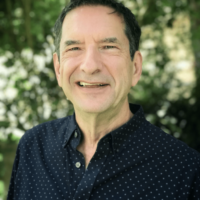The cover story of the February 3, 2014 issue of TIME magazine was “The Mindful Revolution: The Science of Finding Focus In a Stressed-out, Multitasking Culture.” While there have been occasional articles in major media outlets about various types of meditative or reflective practice, this one was different. It was written from an attitude of respect and appreciation rather than from doubt and skepticism.
Just a year ago, U. S. Congressman Tim Ryan’s book, A Mindful Nation: How a Simple Practice Can Help Us Reduce Stress, Improve Performance, and Recapture the American Spirit, appeared on bookshelves. We expect to find books on mindfulness written by spiritual teachers, but not by a member of Congress.
For the last two years at the Davos World Economic Forum, there have been sessions on mindfulness and mindful leadership. Google and Twitter as well as more traditional companies are now using mindfulness practices. Not so long ago, this would have been unheard of in business and economics.
Something in the mass consciousness is shifting. It seems that mindfulness is going mainstream! This is indeed something to celebrate. And, when a powerful practice becomes so popular, it often becomes diluted for mass consumption. We can end up with the “light” version of mindfulness instead of the full depth of awareness and presence that is possible through a committed practice. One could argue that “light” is better than not at all. Perhaps, but why not just go for the full effect?
In essence, mindfulness means devoting 100% of your focus and energy to one thing at a time. To be mindful is to be aware of the totality of your experience – not just of what you are doing, but also of what you are feeling, of your intentions and motivations, of the impact of your presence and actions on everything and everyone around you. It’s 360-degree awareness.
Many people associate mindfulness with Eastern religions, yet contemplation and awareness are part of the foundation of all spiritual traditions. The practice of mindfulness has its roots in the ancient mystery schools. It does not belong to any one tradition, but rather is universal in nature. Neuroscience now confirms what ancient mystery schools have taught for thousands of years – that mindfulness promotes focus and attention, reduces stress, increases brain plasticity and function, brings clarity and expands awareness, and significantly improves overall well being.
From all of the press it is receiving, mindfulness seems to be the new fashionable thing to do. And there’s the catch. Mindfulness is not “a thing to do.” Mindfulness is a way of being, a way of living. It starts with becoming aware of the core of being, the essence of who we are, the essence of what life is.
In the ancient scholarly languages, all of which pre-date the religions associated with them, the words for “soul” and “spirit” translate to mean “breath.” Mindfulness is about becoming aware of how the breath of life is moving through you in every moment, in every thought, in every word, in every action. It’s not something that you practice for 15 minutes a day, check it off your list, and then forget it until tomorrow or the next day when you check in for your 15 minutes again. It’s a way of living all the time.
Developing mindfulness requires attention and focus. However, it doesn’t have to be difficult. It’s actually quite simple. It just takes dedication and commitment to pause throughout the day to focus your awareness. Two or three minutes every couple of hours will get you on the path toward mindful living. The key is to return to the practice frequently and at regular intervals. Here’s a simple way to begin:
Before getting out of bed in the morning, spend an extra two minutes lying under the covers and feeling your body in the bed. Be aware of the bed cradling you and of the covers on your body. Be aware of your breath coming in and going out. And be aware of the sounds – how many layers of sound can you notice? For two minutes, focus on being fully present to your experience. After two minutes, calmly arise from your bed and begin your day.
Throughout the day, pause every two hours for 60 seconds and focus on your breath coming in and out, the clothes on your skin, and the many layers of sound – close-up sounds and far-away sounds. How many layers of sound can you hear? Set the alarm on your mobile phone or computer with a gentle and welcoming ring-tone, and then focus for just 60 seconds. Then go on with your day. It’s not difficult to find 60 seconds every couple of hours. You just need the reminder signal.
In addition, as you go through your daily activities, take one or two minutes periodically to focus 100% of your attention on whatever you are doing. If you are walking, pay attention to how your foot connects with the ground and the movement of your arms and legs. Notice your posture and sense of inner alignment. If you are writing or working at your computer, pay attention to how your hand holds the pen or your hands hover over the keyboard and make contact with the keys. If you are washing dishes, give your full attention to washing the dishes for a couple of minutes. Be aware of the temperature of the water, of the texture of the sponge. Whatever you are doing, give that your full attention for two minutes.
In the evening before going to bed, relax in a comfortable chair for two minutes, focusing on your breath coming in and going out. Feel your clothes on your skin, feel your body in the chair, and notice the many layers of sounds. And then go to bed.
Mindfulness is a way of living. Doing this simple practice throughout the day, most people begin noticing a difference in their overall sense of wellbeing as well as a greater sense of awareness of themselves and their environment. They notice that they are moving a bit more slowly yet accomplishing more. Their thinking is clearer and decision making is easier. And they appreciate the small gifts of life much more.
It could be a great thing if mindfulness in its fullness truly goes mainstream. It really could be a first step in creating a world that works.
P.S. To learn more about mindfulness and its practical application in your daily life, see Chapter 5 of my latest book, Create A World That Works. The book is also available in digital format for most e-readers.
If you enjoyed this blog post and found it helpful or inspiring, I invite you to subscribe to our free weekly newsletter by clicking here.





































